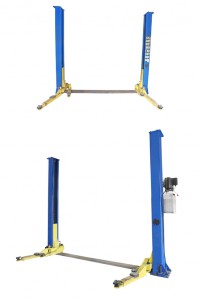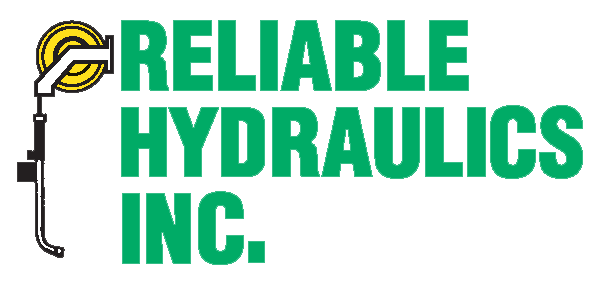
One of the most common sources of confusion about two-post auto lifts is the difference between the symmetric and asymmetric varieties. From the vantage point of the casual observer, the two types look very similar. However, to a serviceperson who needs to easily enter and exit the vehicle, the difference quickly becomes apparent.
A symmetric lift does just what the name suggests. It holds the automobile in the midsection, with equal length protruding in front and back. One perceived drawback of this model is the difficulty the mechanic often experiences when maneuvering in or out of the vehicle. Because the driver's door is usually near the middle of the automobile, once the vehicle is in place on the lift unit, the posts leave the doors little room to open. This configuration makes getting in and out awkward, and it also heightens the risk of harm to the doors.
After observing this dilemma, clever designers have come up with the brilliant idea to affix the vehicle in a different position in relation to the posts. If most of the automobile extends to the rear of the lift, with little protruding out in front, the doors can move much more freely. This makes movement in and out of the vehicle much faster and more convenient, allowing for more efficient service. In addition, it eliminates much of the concern about door damage.
Considering the obvious advantages of asymmetric two-post lifts, people may wonder why symmetric two-post lifts would even remain in use. The reason is quite simple. Although most modern vehicles balance well on asymmetric lifts, due to the majority of their weight being in the front, some kinds of vehicles will be more stable on a symmetric lift. For example, a maintenance van with heavy equipment in the back may not balance well on an asymmetric unit. In addition, even a small car with a rear engine will have a center of gravity better balanced by the traditional symmetric design.
Fortunately, the newer hybrid lifts can provide a solution to the debate over the two models. These little wonders can convert from asymmetric to symmetric, and they can just as easily revert back to asymmetric form. This type of unit can offer the best of both worlds.
With the many innovations in lift design, a vehicle serviceperson can expect plenty of options. Safety and convenience are now available in many different types of hydraulic lifts.
